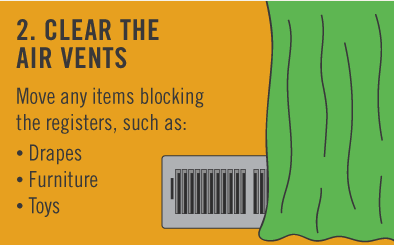The Future Of Home Heating - Exactly How Heatpump Technology Is Developing
The Future Of Home Heating - Exactly How Heatpump Technology Is Developing
Blog Article
Created By-David McCormick
Heatpump will certainly be a vital technology for decarbonising home heating. In a circumstance regular with governments' introduced energy and climate commitments, their global capability doubles by 2030, while their share in heating rises to one-quarter.
They function best in well-insulated homes and depend on electrical power, which can be provided from an eco-friendly power grid. Technical breakthroughs are making them a lot more efficient, smarter and cheaper.
Fuel Cells
Heat pumps utilize a compressor, refrigerant, coils and followers to move the air and warm in homes and home appliances. They can be powered by solar power or electricity from the grid. They have been acquiring popularity because of their low cost, quiet operation and the ability to generate power throughout peak power demand.
Some business, like IdaTech and BG MicroGen, are dealing with gas cells for home heating. These microgenerators can change a gas boiler and produce some of a home's electrical demands with a link to the electrical power grid for the remainder.
But there are factors to be skeptical of using hydrogen for home heating, Rosenow says. It would be pricey and inefficient contrasted to other technologies, and it would certainly include in carbon discharges.
Smart and Connected Technologies
Smart home technology permits home owners to connect and control their devices remotely with using smart device apps. As pop over to this website , smart thermostats can discover your home heating preferences and instantly adapt to maximize energy usage. Smart lighting systems can be managed with voice commands and automatically turn off lights when you leave the room, reducing energy waste. And wise plugs can keep track of and manage your electrical use, permitting you to determine and restrict energy-hungry appliances.
The tech-savvy household illustrated in Carina's interview is a good illustration of how residents reconfigure area home heating techniques in the light of new clever home modern technologies. They rely upon the devices' automated attributes to execute day-to-day changes and regard them as a convenient methods of performing their home heating methods. Because of this, they see no factor to adapt their methods further in order to make it possible for versatility in their home energy demand, and interventions targeting at doing so may deal with resistance from these homes.
Power
Considering that heating homes accounts for 13% people emissions, a switch to cleaner alternatives might make a big difference. However the modern technology faces obstacles: It's expensive and requires comprehensive home renovations. And it's not always compatible with renewable energy resources, such as solar and wind.
Until recently, electrical heatpump were too pricey to take on gas versions in a lot of markets. Yet brand-new technologies in style and materials are making them more cost effective. And much better cold climate efficiency is enabling them to operate well also in subzero temperature levels.
The next step in decarbonising heating may be the use of heat networks, which attract warmth from a central source, such as a neighboring river or sea inlet, and disperse it to a network of homes or buildings. That would certainly decrease carbon exhausts and enable homes to make the most of renewable energy, such as environment-friendly electrical power from a grid supplied by renewables. This choice would be less expensive than changing to hydrogen, a nonrenewable fuel source that calls for new facilities and would only minimize CO2 discharges by 5 percent if coupled with boosted home insulation.
simply click the up coming webpage
As electrical energy prices go down, we're starting to see the very same fad in home heating that has actually driven electric autos right into the mainstream-- but at an even quicker rate. The strong environment instance for electrifying homes has actually been pushed better by brand-new study.
Renewables account for a substantial share of modern-day warmth intake, however have been provided minimal plan attention internationally contrasted to various other end-use fields-- and also much less interest than power has. Partly, this mirrors a mix of customer inertia, split rewards and, in lots of nations, subsidies for fossil fuels.
New modern technologies could make the shift easier. As an example, heatpump can be made a lot more power effective by changing old R-22 cooling agents with brand-new ones that don't have the high GWPs of their predecessors. Some experts also imagine district systems that draw warmth from a close-by river or sea inlet, like a Norwegian fjord. The warm water can then be used for cooling and heating in an area.